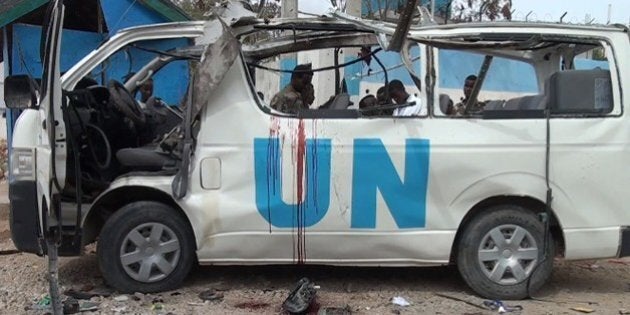
MOGADISCIO, Somalie - L'explosion d'une bombe qui avait été apparemment dissimulée sous un des sièges d'un autobus transportant des employés des Nations unies (ONU) a provoqué la mort d'au moins 6 personnes et en a blessé plusieurs autres, lundi, en Somalie.
Le bilan provisoire a été établi par la police somalienne et par des représentants de l'ONU. L'attaque a été revendiquée peu après par le groupe terroriste Al-Shabab lié au réseau Al-Qaïda.
Un représentant des Nations unies en Somalie, Nicholas Kay, a condamné l'attentat, ajoutant qu'il était dévasté par la perte de vies.
L'attaque s'est produite à Garowe, une petite localité située à environ 1200 kilomètres au nord de la capitale, Mogadiscio, près de la frontière avec l'Éthiopie. Il semble que la bombe ait été actionnée par une télécommande.
Les attentats à la bombe ne sont pas très fréquents dans le nord de la Somalie. Les attaques d'Al-Shabab se produisent habituellement dans les secteurs plus au sud, près de la frontière avec le Kenya.
Plus tôt en avril, Al-Shabab a soutenu avoir été l'auteur du carnage dans une université du Kenya qui a fait 148 morts.

